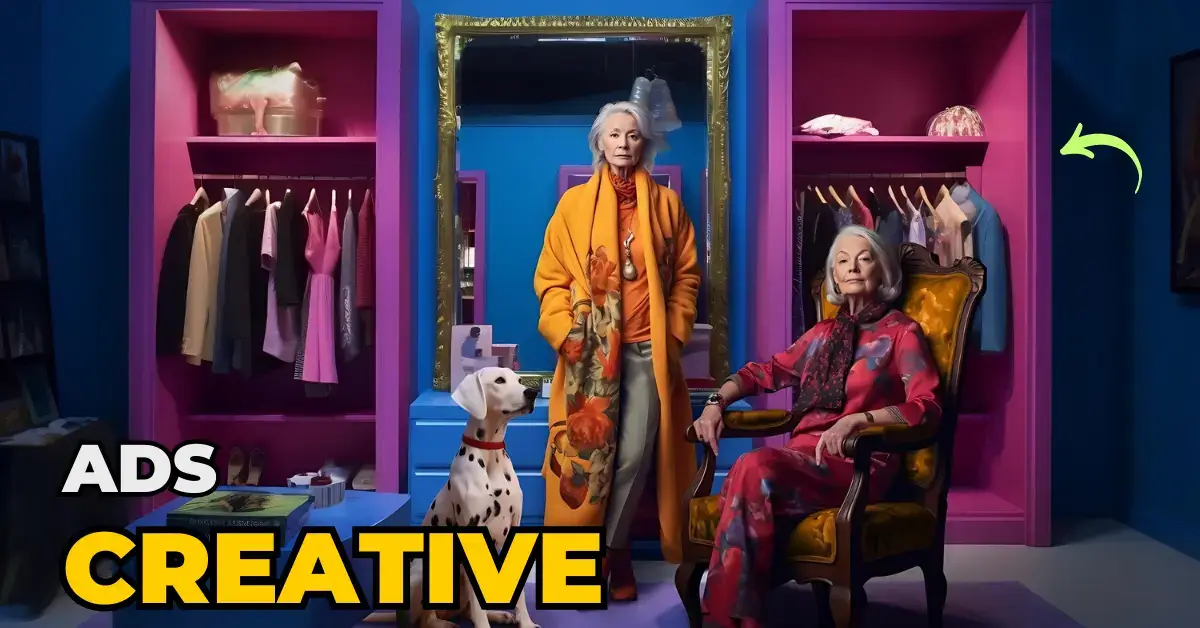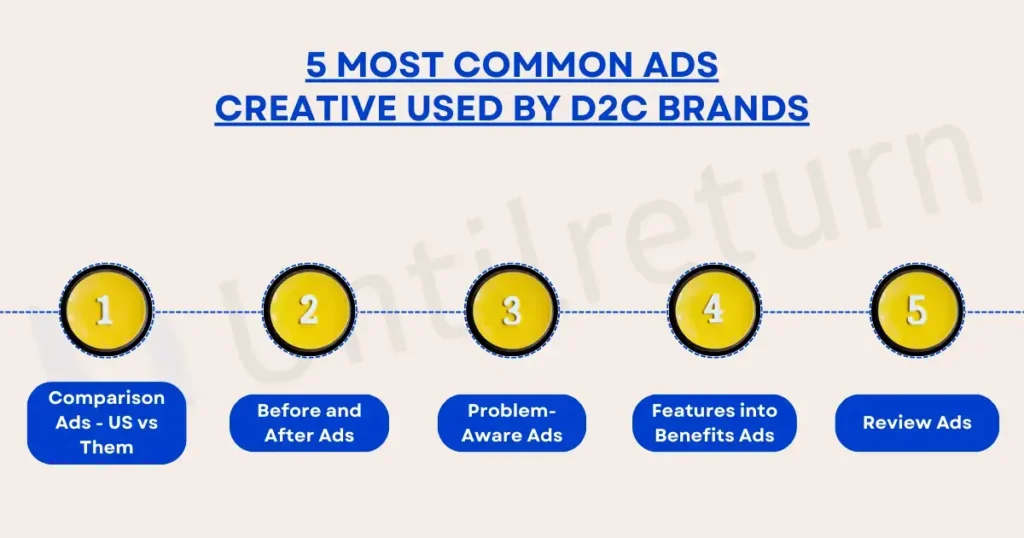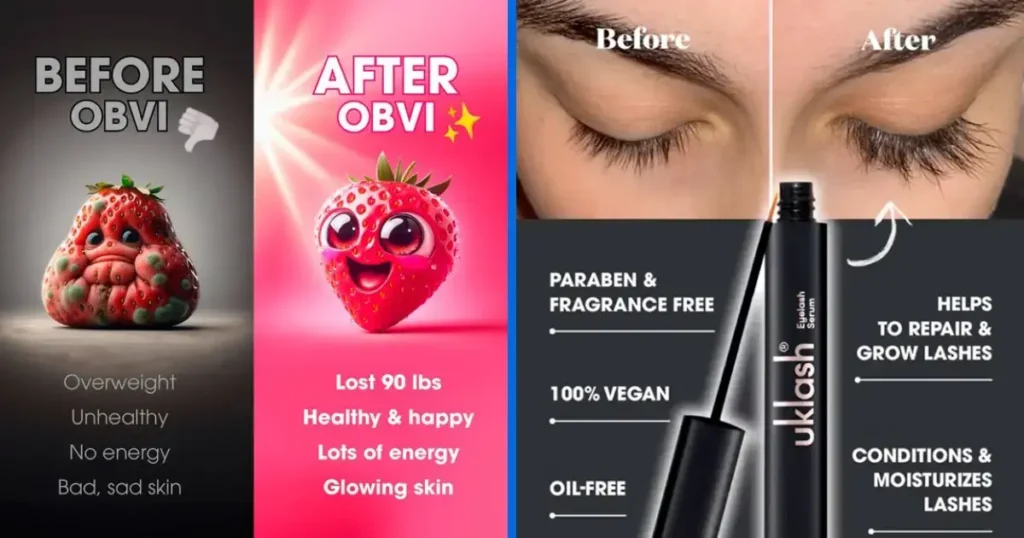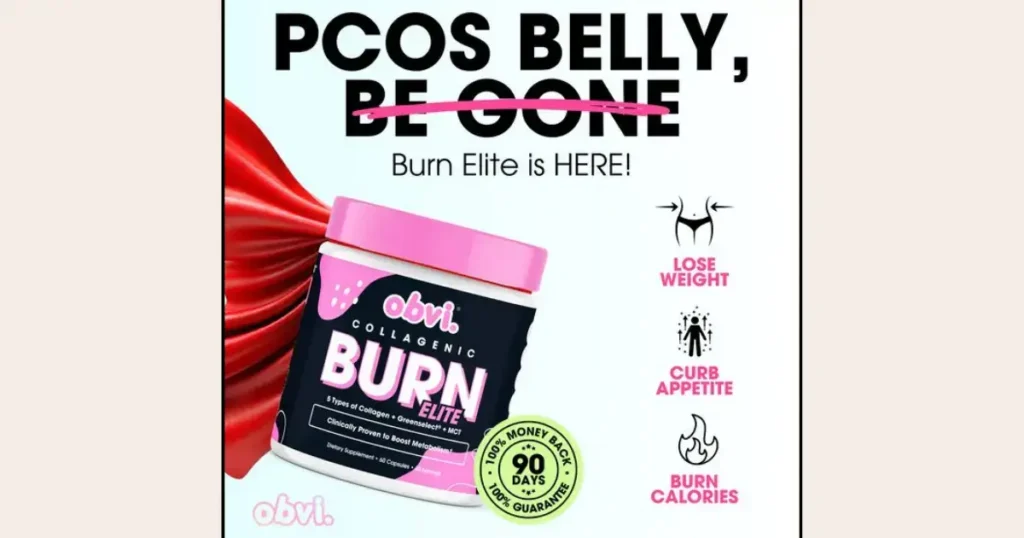5 Most Common Ads Creative Angles Used By Successful D2C Brands

Ever wondered why some ads creative stick in your head while others just fade away? It’s not magic, it’s a clever game played by really smart people who know how to talk to you.
These are the folks behind Direct-to-Consumer (D2C) brands – those companies that skip the big stores and sell straight to you. Imagine trying to catch someone’s eye in a crowded room.
You’d need to do something special, right? That’s exactly what these D2C brands do with their ads. They find clever ways to make you stop scrolling, pause the video, or even smile.
In this story, we’re going to peek behind the curtain and see the tricks of the trade. We’ll explore the sneaky-good ideas these brands use to capture your heart (and your wallet).
So, get ready to learn how these pros turn ordinary products into something extraordinary. Let’s dive in!
Table of Contents
Here are 5 Most Common Ads Creative Used By D2C Brands

Comparison Ads – US vs Them
“Us Vs them” advertising lies in a marketing strategy that highlights the contrast between two conflicting sides. Essentially, it involves comparing your products (the US) with those of your direct and indirect competitors (the Them).
While this approach may come off as aggressive initially, as you are explaining to your target audience why your products are better than your competitors, the primary aim is to spotlight the unique qualities you offer rather than your competitors.
It’s additionally critical to not forget that “us vs them” marketing isn’t always just about product comparison It can also be applied to expose industry weaknesses or pain points to drive change by illustrating how new products, change the ways of doing things.
Typically, comparison ad creatives are most effective during the product awareness phase, in which customers know the kind of product they need but are nevertheless uncertain about which brand to pick.
Before and After Ads
It’s a common frustration that emphasizing the unique selling points of your products is crucial for demonstrating to your audience why they should be interested.
This is because USPs resonate with the desires and needs your target audience is already aware of! Consequently, incorporating product features or benefits into your advertising is always a smart move.

However, instead of merely enumerating them, there are various creative ways to showcase this information. Enter today’s bonus ad example, which includes a useful before-and-after image along with a comparison chart.
Comparing before and after ads is a splendid method for simplifying facts and enhancing retention.
Problem-Aware Ads
Every day, millions of human beings experience an identical sense of misunderstanding. We’re continuously bombarded with commercials—vibrant snapshots and catchy jingles—but do they offer any assistance?
More frequently than not, they stumble upon mere distractions instead of valuable information in problem-aware ads. These aren’t your typical advertisements.
They are as supportive friends who listen to your concerns and propose solutions. Instead of simply selling a product, they take the time to understand your demanding challenges first.

Imagine you’re feeling hungry. While preferred ads might flash engaging photographs of food, a problem-aware ad creative could inquire, “Are you seeking something brief, nutritious, or price range-friendly?” It could then present you with tailored alternatives primarily based on your preferences.
These commercials are clever. They analyze hints from your online behavior—what you search for and what you purchase—to identify what might be troubling you.
So, the next time you come across an ad that appears to resonate with your desires, it’s likely a problem-aware ad in motion. Highly suggest finding your customer problems first and then creating ads around those.
Read Also – Top 16 Mistakes Every Founder Has Made During Their Entrepreneurial Journey
Features into Benefits Ads
Transforming features into benefits requires a strategic change in perspective. Rather than just highlighting what your product is able to do, it is crucial to exhibit how the features could make a superb distinction in your customers. Here’s an in-depth technique to obtain this shift in perspective:
| Techniques | Description |
|---|---|
| Identify the Key Features | Start by making a list of the standout characteristics of your product. These may include technical details, features, or special qualities that differentiate your product from your competitors in the market. |
| Ask “So What?” | Consider the impact of every feature by asking, “So what?” This clean question encourages you to mirror how every feature can definitely gain the actual world. What issues does it address? In what methods does it beautify the fine of life? |
| Translate Features into Benefits | After addressing the “So what?” question, it’s important to convert all features into benefits that in reality connect with your customers. Be clear and emphasize how these benefits complement their day-to-day lives. |
For example Fitbit Fitness Tracker. Their feature is “Heart Rate Monitoring” but they converted it into a benefit as “Stay Heart-Healthy with Real-Time Monitoring“.
Fitbit goes beyond just discussing heart rate monitoring; they point out its role in allowing users to monitor their heart health in real-time, encouraging a healthier way of living. This advantage resonates with health-focused individuals eager to manage their wellness actively.
It’s no longer pretty much impressing others with jargon words. It’s about connecting with them on an emotional level.
It’s about showing how your product can deal with their needs or desires, boost their mood, or assist them in achieving their objectives. That’s the true art of turning features into benefits.
Review Ads
Imagine stepping into a new store. You glance around, not sure what to purchase. Then you spot a label that reads “Best Seller” or “People Love This”. That’s similar to a review ads creative. It gives you a glimpse into what others think.
Review ads are like mini-stories shared by real people about their experiences. They reveal their preferences, dislikes, and everything in between. It’s like having a quick conversation with someone who has already tried something and is letting you know if it’s worth it.
These ads don’t just promote products; they establish trust. When you see numerous people praising something, it makes you more confident about giving it a try. It’s like having a group of friends recommending something fantastic.
So, the next time you’re uncertain about making a purchase, keep an eye out for those review ads. They’re like little word-of-mouth magic, helping you make wiser decisions.
Final Verdict
Ultimately, the heart of every successful D2C Brands ad creative lies in understanding the real person behind the screen. It’s not pretty much selling a product; it’s about connecting with a sense, a need, a story.
The 5 angles we have explored – Comparison ads creative – US vs Them, Before & After ads creative, Problem-aware ads creative, Features into Benefits ads creative, and Review ads creative – are like extraordinary doors to a person’s world. However, the important thing in beginning those doorways is empathy.
When a brand truly cares about the customer’s life, its commercials come to be greater than just promotions. They grow to be partners, presenting solutions, goals, and a sense of belonging.
It’s about showing people they’re not alone, that their struggles and hopes are shared, and that the product is a helpful friend on their journey.
In the noisy advertising and marketing world, authenticity is the quiet strength that stands out… Let your ads be a conversation, not a shout. Hopefully, this post will help some of you guys. Thanks for reading. See you in the next one.






